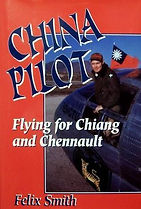

.jpg)

was an American aviator and aviation executive. From 1931 until 1948 he was operations manager and vice president of China National Aviation Corporation (CNAC).
In 1933, the Curtis-Wright Corporation owned a 45% share of CNAC, in partnership with the Nationalist government of China. Westervelt selected Bond as the manager of CNAC, and Bond arrived in Shanghai in 1933. The first route ran from Hankow to Chungking, along the Yangtze River. Since prepared airfields were uncommon at
In 1933, Pan American Airways bought 45% share of CNAC that was held by Curtis-Wright. Pan Am wished to obtain landing rights in China for Trans-Pacific flights, but due to international treaties forced on China in the 19th century, granting landing rights to an American company would also require China to grant landing rights to Japan, which
After the Chinese revolution, the Pan-Am interest in CNAC was wound up. In spite of operations during civil and global war, Pan Am's interest in CNAC was sold to the Chinese government at a profit. Bond returned to the United States in 1950. He purchased a working farm and served on the board of directors of the Kentucky River Coal Company. William Bond died in 1985.
Bond had started compiling his memoirs, which were later edited by James E. Ellis and published in 2001 as "Wings for an Embattled China"
The above was transcribed from Wikipedia
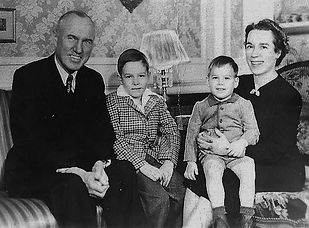


Loening C-2 "Air Yacht"
1893 - 1985
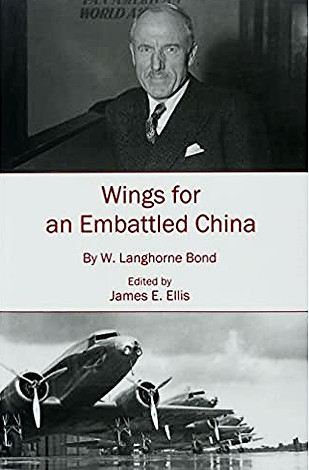
the time, the initial airline fleet consisted of six Loening Aeronautical Engineering "Air Yacht" flying boat amphibious aircraft, which could land on a river or other open water as well landing fields. A second scheduled air route between Shanghai and Beijing could not be put into operation until 1933; during this time there was a major flood of the Yangtze River and the Japanese invasion ( Mukden Incident) of mainland China.
just invaded China. Bond maintain his Director of Operations position after the Pan-Am ownership; a new route was added to the CNAC system by Pan-Am.
In 1937 on the outbreak of war between China and Japan, due to the growing concerns about preserving American neutrality, Bond effectively resigned his position from Pan-Am and became a direct employee of CNAC. As war progressed, Bond realized the importance of an air route between India, Burma and China. In 1941 he wrote a memorandum outlining what was later to be known as The Hump route. Bond attempted to keep the civilian nature of the airline intact during the war.
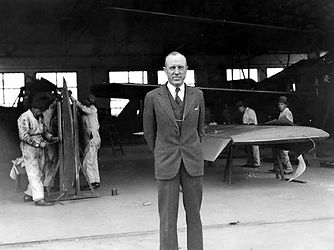

William Langhorne Bond
Over my many years in aviation, I have had the opportunity and pleasure to meet many individuals that have shaped the aviation industry.
I first met Langhorne in 1979 and even though I never met Langhorne's father William, I feel a connection from others I have met and worked with as by six degrees of separation or friends of friends. Tom Anusewicz
The name's Bond, Langhorne Bond.
Langhorne was born in Shanghai on March 11, 1937, when his father managed CNAC at the outbreak of war between China and Japan. From China to Virginia in 1950 and then beyond.
Bond holds degrees from Queens College (London), Mc Gill University (Montreal) and a law degree from the University of Virginia.
He served as Undersecretary of Commerce for transportation at the U.S. Department of Commerce (Wash. D.C.), Director of the National Transportation Center (Pittsburg), Secretary of Transportation of Illinois.
Langhorne Bond - President 1976

Langhorne was appointed by President Jimmy Carter as the administrator of the Federal Aviation Administration from 1977 to 1981.
Langhorne continued to support aviation and transportation and give his expert opinions on many matters for many years. Thank you for your contribution to this industry.
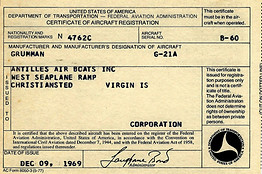



The signature certifying the various AAB aircraft registrations (duplicate) as well as my own airman license was that of Langhorne Bond.
Months following Capt. Blair's death, Mr. Bond made a visit to Antilles Air Boats in St. Croix. Maureen O'Hara Blair gave him a tour of the AAB facilities and I remember he came to my office were we talked about our operations. It was interesting that over thirty years later, I once again met Langhorne at the Annual Aviation Issues Conference held each year in Hawaii. Over the following few years, I attended the conference were I would spend time with Langhorne and his wife Queta. The last year I attended I also met his daughter, who flew as a pilot for Netjets.
I always enjoyed spending time with the Bonds and felt it appropriate to include a little of their story on the AAB website.
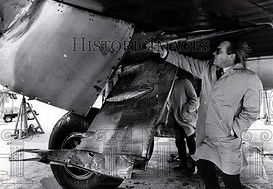

Sept. 10, 2012
China National Aviation Corp. (CNAC) Reunion
Queta & Langhorne Bond

an excerpt from Felix Smith's
China Pilot...
After the war had finished, I was flying between Nanking and Chungking with Mr. Bond as one of the passengers. We had to stop at Hankow for fuel, so we all went into the operations tent for a cup of coffee. As we were sitting there talking, Mr. Bond said, 'Now, Robbie, the war is over, we're a scheduled airline, everyone of you boys must be in uniform, shaven, and put on a respectable appearance for the passengers. No more chewing tobacco or coonskin caps, and put your .45 in your flight bag. Remember, we're a scheduled airline." Just then about six hogs ran through the tent, splattering mud over both of us. I said, "Yes sir, Mr. Bond, this is a schedule airline."
George Robertson
